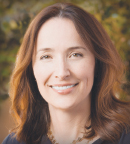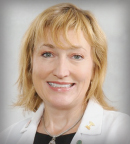Women account for a growing proportion of the oncology workforce. Multiple studies, however, show that women oncologists are underrepresented in leadership positions, may have significantly lower salaries than men, and may be subjected to discriminatory practices stimulated by a medical culture permeated with conscious and unconscious gender biases that, among other harms, stifle career growth.
Open Dialogue Needed
In an interview with The ASCO Post, gastrointestinal oncologist Pamela Kunz, MD, noted that, during her mid-career point at Stanford University, she experienced gender discrimination as she began assuming leadership roles. “I was experiencing targeted gender discrimination that was stifling my career. Gender biases in academic institutions have long been recognized, from inequities in salary to gender harassment,” said Dr. Kunz.

The first step is talking openly about gender biases. One of my missions is to normalize conversations around the issue of gender inequity within the context of the institution and workplace.— Pamela Kunz, MD
Tweet this quote
Dr. Kunz is involved in several national organizations that address gender disparities in academic oncology and research. In 2020, she was a scientific track leader for ASCO’s Annual Meeting Scientific Program Committee to evaluate scientific abstracts on diversity and workplace disparities. She also chaired an ASCO 2021 session entitled “Dismantling Gender Disparities in the Global Oncology Workforce Together.”
In July 2020, Dr. Kunz joined Yale School of Medicine, serving as Director of the Center for Gastrointestinal Cancers at Yale Cancer Center and Smilow Cancer Hospital and Vice-Chief of DEI for the Section of Medical Oncology. Asked how to promote gender equity, Dr. Kunz said, “The first step is talking openly about gender biases. One of my missions is to normalize conversations around the issue of gender disparities within the context of the institution and workplace. I’m also interested in promoting research into gender disparities in academic medicine and, to that end, I’ve begun some of my own research,” said Dr. Kunz.
She continued, “Contributing to objective data around some of these gender disparities and discrimination issues in the professional workforce will be helpful, given that oncologists are scientists and they make decisions based on data.” The next step is focusing on concrete solutions. She also notes that it is important to include intersectionality and nonbinary gender as part of this conversation around workplace disparities. Dr. Kunz said, “women who identify with other marginalized groups, such as BIPOC [Black, Indigenous, or other people of color] or gender minorities, face additional challenges and inequities.”
Transparency Key to Equality
A report by the Accreditation Council for Graduate Medical Education (ACGME) that analyzed accredited oncology programs found gaping gender distribution gaps in the leadership positions in academic oncology programs. Women represented 35.9% of the total faculty body in medical oncology, radiation oncology, and surgical oncology programs. Representation of women in leadership positions was even lower at only 24.4% overall; only 16.3% of oncology departments were chaired by a woman oncologist.

V.K. Gadi, MD, PhD
Transparency is central to the concept of equality since, without it, equality or the lack thereof cannot be established. Despite this, many of the driving forces behind gender bias in academic oncology exist within systems that are blind to it. According to V.K. Gadi, MD, PhD, Director of Medical Oncology at the Illinois College of Medicine, gender biases that inhibit career growth among women oncologists stem from a gamut of underlying structural issues. “There are obvious persistent gender bias issues around earnings and promotions, but the inequity issue I see most often for women oncologists is being unfairly passed over for promotion in favor of men. As a department head, I’ve tried to address this inequity by first recognizing it and making sure that we are being cognizant of and transparent about standards for job advancement,” said Dr. Gadi.
Dr. Gadi noted that growing awareness of gender discrimination has generated positive cultural change. “Most faculty are trying to be fair and equitable with their colleagues, but there are structural ways to ensure that, as an institution, we illuminate inequities. First is total transparency about salaries. I have always been in an environment where pay transparency is standard practice. In fact, all of our salaries are public data.”
“We don’t want to realize after the fact that we offered a woman candidate a contract that is less than the one we gave to a man. It’s vital not to be opaque about the salary and promotion process. We want to be open about everything, no matter how small we may feel it is,” said Dr. Gadi.
Gender Inequity’s Lasting Damage
Thomas George, MD, FACP, Associate Director for Clinical Research at the University of Florida Health Cancer Center, noted that his own awareness of gender inequality has developed in stages. “My recognition of the full extent of gender discrimination has evolved over several years. But in a previous role serving as our institution’s Fellowship Program Director, it became apparent that women graduates from the program were at a competitive disadvantage relative to some of our graduates that are men in getting their first employment opportunities after fellowship. I don’t think it really hit home for me until I saw patterns emerging, instead of isolated incidences,” said Dr. George.

Keeping awareness front and center is vital, but we need to analyze and change long-standing polices that have made it harder for women to succeed in a male-dominated culture.— Thomas George, MD, FACP
Tweet this quote
He continued, “The early competitive disadvantage in recruitment, salaries, and protected time in that first job led to a continuum of similar disadvantages for women. In other words, they started behind their male peers, and that lag persisted throughout their careers. This structural discrimination and its consequences became even more apparent in my current role where I’m mentoring junior and midcareer faculty. I’ve also seen this pattern of gender inequity across other cancer centers and organizations with whom I collaborate. It’s pretty pervasive.”
Changing the Status Quo
Dr. George noted that awareness is an important first step, but to effect lasting change, leaders need to initiate stepwise action to address implicit gender bias. “Keeping awareness front and center is vital, but we need to analyze and change long-standing polices that have made it harder for women to succeed in a male-dominated culture. My goal is to help create an environment where the accomplishments of women colleagues are recognized and celebrated. Because of my leadership positions, I have the opportunity to ensure that our programs, panels, and symposia have equal, if not greater, female representation,” said Dr. George, adding, “I also use my voice to counter those who argue that the policies that have systematically disadvantaged my women colleagues are fine just the way they are.”
JEDI Approach
According to the 2020 Women in Medicine Summit keynote speaker Darilyn V. Moyer, MD, although gender equity markedly improves productivity in the health-care workplace, women continue to be underrepresented in medicine. Dr. Moyer, Executive Vice President of the American College of Physicians (ACP), noted that the ACP has been a leader in combating gender bias, citing a 2018 position paper in Annals of Internal Medicine offering recommendations on how to promote and achieve gender equity within the medical profession.1

Darilyn V. Moyer, MD
One of the more telling findings was the significant inequity in salaries among men and women in medicine. For instance, in internal medicine, on average, men made upward of $52,000 more than women. Dr. Moyer stressed that it was important to fix the structural systems that create bias and inequity by promoting an environment of justice, equity, diversity, and inclusion (JEDI). “I am 1 of 3 women physicians heading 1 of the 50 or so national medical societies in the United States, so there are not too many of us in leadership positions on the national scale,” Dr. Moyer told The ASCO Post.
Deliberative Practice
Asked how policy changes practice, Dr. Moyer responded, “You need to employ what we in clinical medicine call ‘deliberative practice.’ In other words, you can’t fall into the usual patterns. For instance, because women are often overlooked for awards, the ACP removed biased language from its descriptions for what we call Mastership (MACP) honors to address barriers for nominations. In 2007 to 2008, only 4 of 80 MACP nominees were women. In 2019 to 2020, women accounted for 27 of 87 MACP nominees, and two-thirds of the nominated women were selected compared with one-third of the nominated men. Although this scenario describes awards, it’s an important way to gauge the overall issue of gender inequity.”
Dr. Moyer stressed the importance of woman-to-woman mentorship as a way to overcome gender-based barriers. “Overcoming structural gender biases in medicine will take an all-hands-on-deck approach in communities and schools, so we can open pathways to success for women in medicine early on. Inspiration goes a long way also. I came from poor, rural Pennsylvania, where I grew up riding on my Pop-Pop’s tractor. I was inspired into medicine at 10 years old by our female pediatrician who visited me at my bedside in the hospital. After talking, she told me I could and should become a physician because we needed more women in medicine. I took that advice to heart. Even though gender inequity in medicine is a broad-based challenge, we can’t forget to address it on a personal level,” said Dr. Moyer.
DISCLOSURE: Dr. Kunz has served in a consulting or advisory role for Novartis, Ipsen, SunPharma, Amgen, Genentech, and Crinetics. Dr. Gadi has served in a leadership role for SEngine Precision Medicine; holds stock or other ownership interests in 3rdEyeBio, New Equilibrium Biosciences, Novilla, and Sengine Precision Medicine; has served in a consulting or advisory role for Novartis, Puma Biotechnology, Sanofi, and Seattle Genetics; has participated in a speakers’ bureau for bioTheranostics and Seagen; has received research funding from Agendia and SignalOne Bio; has received institutional research funding from Genentech/Roche; and has been reimbursed for travel, accommodations, or other expenses by Novartis. Dr. George has received institutional research funding from AstraZeneca/MedImmune, Bayer, Bristol Myers Squibb, Genentech, Incyte, Ipsen, Lilly, Merck, Pharmacyclics, Seattle Genetics, and Tesaro; and has served in a consulting or advisory role for Tempus Labs. Dr. Moyer reported no conflicts of interest.
REFERENCE
1. Butkus R, Serchen J, Moyer DV, et al: Achieving gender equity in physician compensation and career advancement: A position paper of the American College of Physicians. Ann Intern Med 168:721-723, 2018.

